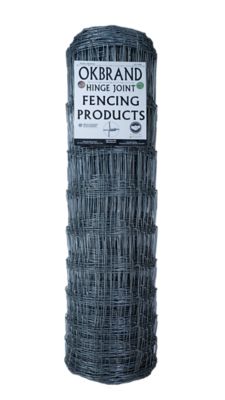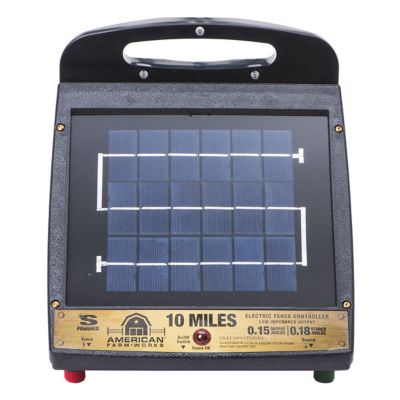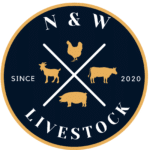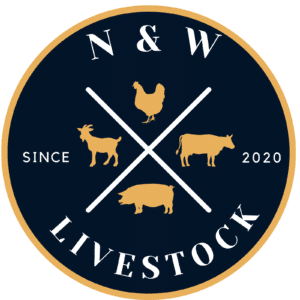Posted onLast updated: September 3, 2021
Outdoor Happens is reader-supported. When you buy through links on our site, we may earn an affiliate commission. Click to learn more
I have been toying with the idea of introducing cows to our small-holding, but the thought of having to upgrade all our fences is a little daunting, to say the least.
From what I’ve experienced of cows, they perceive fences primarily as scratching posts and then as items requiring mass destruction.
As I’m getting to grips with the technicalities of the best fence for cattle, I thought I’d share my insights with you.
How Do I Choose the Best Fence for Cattle?

What type of fencing you choose for your cows will depend, in part, on their breed and usage.
Beef cattle tend to be bigger and tougher, therefore requiring stronger fences than dairy cows. If you’re getting bulls as well as cows, your best fence for cattle will need to be stronger again, and a little higher.
By the way, if you’re having trouble keeping flies off your cows, have a read of this article: The best ways to keep flies off your cattle – from zebra stripes to pour-on
You also need to consider what other animals will come into contact with your fence.
You may need a fence that’s robust enough to keep predators away from your precious calves. On the other hand, you might need to consider wildlife-friendly fencing if deer or pronghorn are liable to cross it.
Costs will also influence your final decision and you need to factor in the upfront cost of materials, the cost of fence maintenance, and the expected lifespan of your best fence for cattle.
There are also legal concerns to take into consideration.
In California, for instance, barbed wire fences are banned in residential areas unless “it is at least seven (7) feet above ground level and not visible from any adjacent public street,” while the State of Montana has a long list of requirements which, if you fail to meet them, could land you in legal hot water.
Find out how many cows per acre you can keep in your state!
Five Tips for the Best Fence for Cattle

1. Height
Regardless of the type of cattle fencing you end up opting for, your fence height needs to be at least 49 inches high, or, if you’re planning on getting bulls as well, between 54 to 60 inches high.
2. Corner Posts
Strong corner posts are the foundation for any reliable best fence for cattle.
Your corner posts need to be planted deep so that between a third and half of the post’s full length is underground. For instance, if you have a 6-foot pole, you’ll need to plant it at least 2-feet deep.
3. Tension
Regardless of your choice of wire, tension is key to durability. A well-tensioned wire fence can more easily spring back up if it gets squashed by a tree or charged by an animal.
4. Post Spacing
Although post spacing varies depending on the type of best fence for cattle you choose, getting the spacing between the posts correct is vital for its longevity.
- For barbed wire fences, the rule of thumb is one post per every 16.5 feet.
- For high tensile wire fences, however, this can be extended to around 80 to 100 feet, or “50 posts per mile“.
5. Strands of Wire
Again, this will vary according to your fence type.
- Experts recommend you use around five strands in a barbed-wire fence.
- For high-tensile fencing, you should have at least 4-5 strands, spaced about 10″ apart.
Bear in mind that, the more intensive your approach, the more strands you need. For instance, 10 cows on a smaller farm will need more strands than fewer cows with more space to roam.
Tractor Supply has an awesome range of fencing supplies, check out their best fence for cattle here:
The Best Permanent Fencing for Cows
The best fence for cattle “should provide both a physical and a visual barrier,” and there are a variety of options available, each with its own set of pros and cons:
The Classic Barbed Wire Fence

Although a popular choice for larger animals, barbed wire fencing isn’t the most aesthetic fencing option, nor the most humane. Its “barbs create an effective physical deterrent,” but they can also cause serious injury to both your cows and other animals.
Often perceived as the cheapest option available, barbed wire fencing is often more expensive than electric fencing, largely because of the maintenance costs involved.
Full barbed wire fences aren’t as popular as they once were, with many farmers and property owners using barbed wire strands in conjunction with other fencing materials.
A single strand of barbed wire at the top of a high-tensile or hinged-joint fence reduces the risk of your cattle injuring themselves, but still helps “to keep out predators and unwanted trespassers.”
Here is a good quality high-tensile barbed wire at Tractor Supply.
High-Tensile and Hinged Joint Fencing

OK Brand 1047-6-12 1/2 Hinge Joint Field Fence CL1 Galvanized, 0212-5 [More] – Price: $179.99 – Buy Now
A hinge-joint field fence is a “flexible, adaptable and economical” choice for the best fence for cattle that is suitable for a variety of farm animals, including cattle, goats, sheep, and even chickens. (We have a huge range of articles about all things farm animal if you’d like to read more!)
Also known as a farm fence, a hinged-joint fencing system consists of a four-wrap hinge joint, which in turn are made up of two vertical stay wires wrapped together. This forms a knot that acts as a hinge when put under pressure. Once the pressure is removed, the fence will spring back into shape.
The spaces within a hinge-joint fence are graduated, with the narrower wire spacings at the bottom of the fence designed to deter predators and other small animals.
Hinged joint fencing forms a durable cattle fence that is only marginally more expensive to install than a barbed wire but easier to maintain and less susceptible to breakage. There’s also less likelihood of your cows injuring themselves on a field fence, compared to a barbed-wire version.
Here’s a great hinged-joint fence at Tractor Supply.
High-Tensile, Fixed-Knot Fence

Bekaert Solidlock Pro High Tensile Fixed Knot Fence, 12.5 ga., 330 ft., 118226 [More] – Price: $359.99 – Buy Now
Fixed-knot cattle fences will “outperform traditional barbed wire and hinged-joint fences in every application with superior durability, flexibility, and safety.” (source)
Also known as woven wire fences, these types of fences are made of interconnected horizontal and vertical wires that overlap and knot together to form a series of rectangles or squares.
This long-lasting best fence for cattle outperforms both the barbed wire and hinged joint fencing options, making it the best value for money. The lifecycle cost is minimal and is its maintenance requirements.
Here’s a good quality fixed-knot fence at Tractor Supply.
Other Options For the Best Fence for Cattle

Wooden Post Fence
Post-and-rail field fencing is aesthetically pleasing and provides a robust best fence for cattle solution. If you only have a couple of animals, it can work well, but will often prove more expensive and demand more maintenance than our top three best fence for cattle options.
Operating costs can escalate with wooden fencing, as cows rub on the fence posts, and chew the cross poles, leading to additional costs and extra maintenance.

Treated Wood Post, 6/7 x 8 ft. [More] – Price: $21.99 – Buy Now
Electric Fences
An electric wire fence is a great temporary fencing solution and can be added to other types of fences, including high-tensile and farm fences, to provide an additional physical deterrent.
We’ve built some strong fences on our property using electric fence wire and permanent wooden posts, but they don’t tend to last long. The upkeep is also time-consuming as anything touching the fence wires will cause the whole thing to short.

American FarmWorks 10-Mile Solar Low Impedance Fence Charger, 2 Week Battery Life, 01.5… [More] – Price: $184.99 – Buy Now
Additional Cattle Fencing Costs and Materials
Regardless of whether you opt for high-tensile fences or barbed wire fencing systems as your best fence for cattle, there’ll still be a few additional items you need to budget for.
Wooden fence posts are an integral part of any livestock fencing making good-quality, treated posts a must.
Staples play an important role in “the overall strength and longevity of the fence,” so choosing the rights ones is crucial.
If you’ve opted for softwood poles, for example, you should consider 1 ¾” galvanized staples with additional barbs. For hardwood posts, a standard 1½” smooth staple is ideal.
If you’ve decided to include a couple of electric strands at the top and bottom of your fence, you need suitable insulators as well as a fence charger, cabling, and grounder rods.
Don’t forget – you also need some gates, especially if you want to cuddle your cow from time to time.
Your Best Fence for Cattle Solution
With the correct planning and preparation, you can construct the best fence for cattle that is visible, durable, cost-effective, and safe.
While barbed wire provides a strong physical deterrent, it’s not wildlife-friendly, and could leave your cows with festering wounds and scratches.
For a smaller property, and a smaller herd, the standard hinge-joined farm fence is a suitable option. You may, for aesthetic purposes, prefer a wooden fence which, although durable, tends to be less cost-effective.
A woven wire or high-tensile, fixed-knot fence offers the best fencing solution for cows, combining longevity with low input costs and minimal maintenance.
Better still, even if your cows do decide to make a break for it, they should come out of the experience unscathed.
Author
NickyA horse-mad redhead with a passion for the outdoors, Nicky lives on a 6ha small-holding on the Wild Coast of South Africa. She spends her time rearing goats, riding (rearing) horses, and meticulously growing her own chicken food. She has a witch’s knack with herbs and supplements everything, from her beloved Australian Cattle Dog to the occasional passing zebra with the fruits of her labor. Nothing is bought unless Nicky fails to MacGyver it out of scraps of broken bridles, baling twine, or wire. She loves baling twine (and boxes, oddly enough).View all posts




